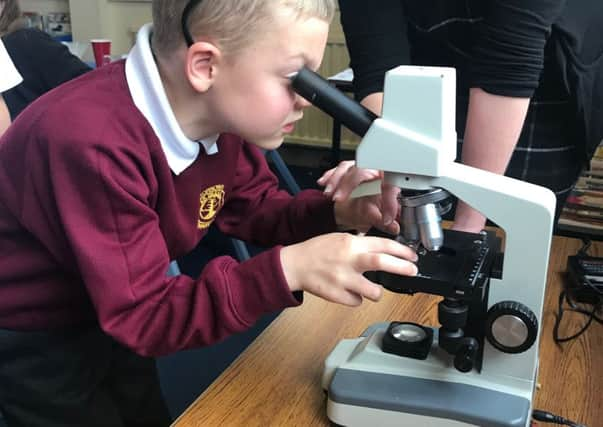Alice in Wonderland story shrunk to size of single human hair


Each page of the miniscule volume, which will be displayed at an exhibition of miniature books in Glasgow, is only as wide as a single human hair. The work has been carried out by a silicon photonics expert from the University of Cardiff and a University of Glasgow children’s fantasy specialist.
Dr Dimitra Fimi, from Glasgow University’s School of Critical Studies, said the idea of “Tiny Alice” was to capture the public’s imagination.
Advertisement
Hide AdAdvertisement
Hide AdThe concept chimes with the theme of the celebrated 1865 novel in which Alice falls down a rabbit hole and finds a bottle labelled “DRINK ME” – the contents of which cause her to shrink.
“Tiny Alice” was created using a cutting-edge technology known as electron-beam lithography at Cardiff University’s Institute of Compound Semiconductors. The tiny creation can be seen only tomorrow – the first day of the exhibition of miniature books at the University of Glasgow’s Library.
The exhibition has been curated by Dr Fimi to showcase the tradition of miniature books from medieval to modern. It will feature some of the tiny treasures held at the university’s Special Collections, including a miniscule 13th-century handwritten Bible on velum. Lewis Carroll was also a keen collector of miniature books. The exhibition will run until September.
Dr Fimi has carried out research into people’s fascination with the miniscule in children’s literature – a theme that runs throughout Alice’s Adventures in Wonderland – and has used the “Tiny Alice” project to explore the ways in which such texts interact with science.
She said: “The aim of the ‘Tiny Alice’ project in collaboration with Cardiff University was to capture the public imagination, to encourage scientific innovation and to highlight the ways in which the creative arts and science have often cross-pollinated and cross-fertilised each other.
“We want this project to inspire younger generations to consider the sciences and the humanities not as mutually exclusive fields, but as interwoven and inter-dependent.”